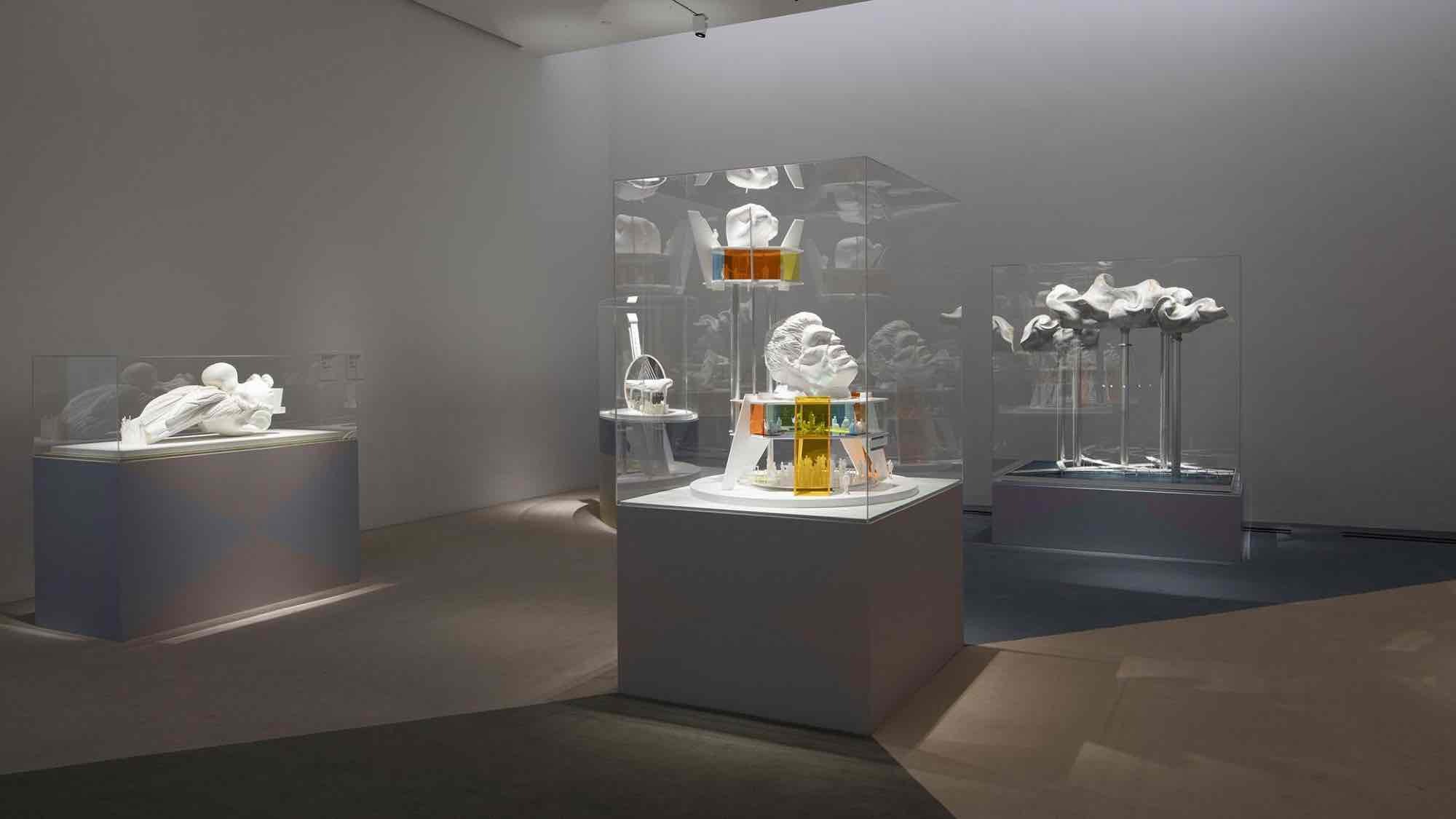Simon Fujiwara
It's a Small World
01 Mar - 13 Oct 2024

Simon Fujiwara, It's a Small World (Memorial), 2021. Photo: Finnish National Gallery / Pirje Mykkänen

Simon Fujiwara, Syphilitic Comrades (Gauguin), 2020. Photo: Finnish National Gallery / Pirje Mykkänen
Simon Fujiwara‘s (b. 1982, Great Britain) works reflect on how a self is constructed. His many influences include history, art history, advertising and theme park design. Fujiwara’s output as an artist ranges from performance to video and from painting to the creation of entire themed worlds. His works are informed by his studies in architecture and are often presented as spatial experiences in which ethical and moral questions can coexist with the fantastical and the absurd. Fujiwara frequently uses his own personal history as a starting point for his works.
Syphilis – A Conquest (2019–) charts Fujiwara’s experience of contracting and recovering from syphilis, staging the journey as an adventure tale and mining the illness’s art historical resonance. In Joanne (2016), Fujiwara produces a video portrait of his former teacher who became the victim of a nude photo scandal, and her attempt to reclaim her public image.
The exhibition also includes four early videos or performance pieces. In each of these works, Fujiwara plays with construction and cultural expectations of his identity as a gay, British-Japanese artist. Created between 2008 and 2012, the works have never before been exhibited together.
Familiar figures – some from Finland
In his most recent body of work Who the Bær, Fujiwara explores identity through the figure of a cartoon bear. As they search for their “true” identity, the lovable cartoon bear morphs effortlessly into various art styles, people, and objects.
For the show at Kiasma, Fujiwara has created an overview of Who’s Finland: in the new works, the cartoon bear travels from a painting of the golden age of Finnish art into the world of Tom of Finland, replaces one of the bathing boys in Verner Thomé’s painting, and plays with the forms of Finnish design.
Through his practice, Fujiwara seeks to expand our notions of race, gender and national and sexual identities in a world that is increasingly mediated by technology and images.
The exhibition is curated by João Laia, chief curator of temporary exhibitions.
Syphilis – A Conquest (2019–) charts Fujiwara’s experience of contracting and recovering from syphilis, staging the journey as an adventure tale and mining the illness’s art historical resonance. In Joanne (2016), Fujiwara produces a video portrait of his former teacher who became the victim of a nude photo scandal, and her attempt to reclaim her public image.
The exhibition also includes four early videos or performance pieces. In each of these works, Fujiwara plays with construction and cultural expectations of his identity as a gay, British-Japanese artist. Created between 2008 and 2012, the works have never before been exhibited together.
Familiar figures – some from Finland
In his most recent body of work Who the Bær, Fujiwara explores identity through the figure of a cartoon bear. As they search for their “true” identity, the lovable cartoon bear morphs effortlessly into various art styles, people, and objects.
For the show at Kiasma, Fujiwara has created an overview of Who’s Finland: in the new works, the cartoon bear travels from a painting of the golden age of Finnish art into the world of Tom of Finland, replaces one of the bathing boys in Verner Thomé’s painting, and plays with the forms of Finnish design.
Through his practice, Fujiwara seeks to expand our notions of race, gender and national and sexual identities in a world that is increasingly mediated by technology and images.
The exhibition is curated by João Laia, chief curator of temporary exhibitions.





